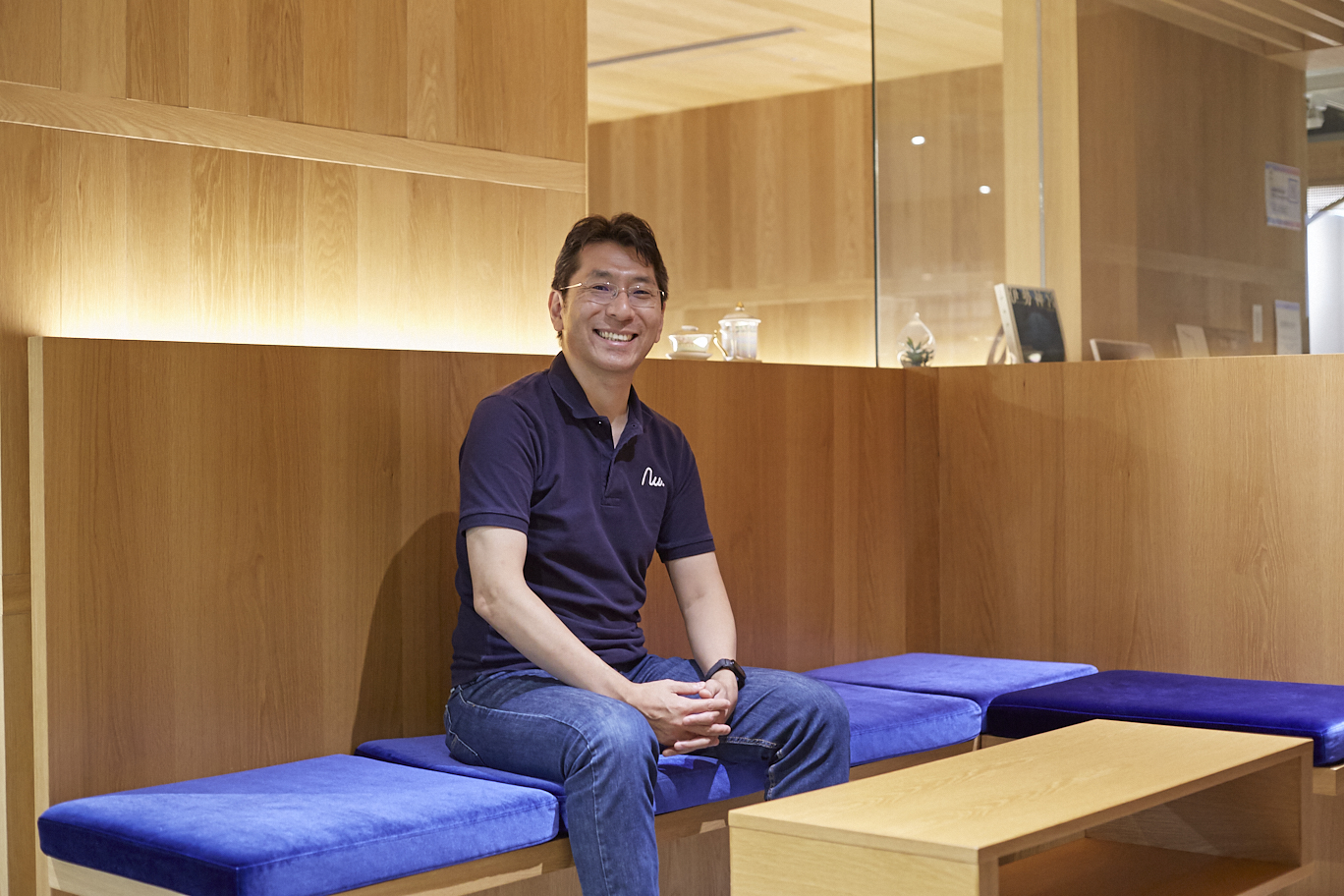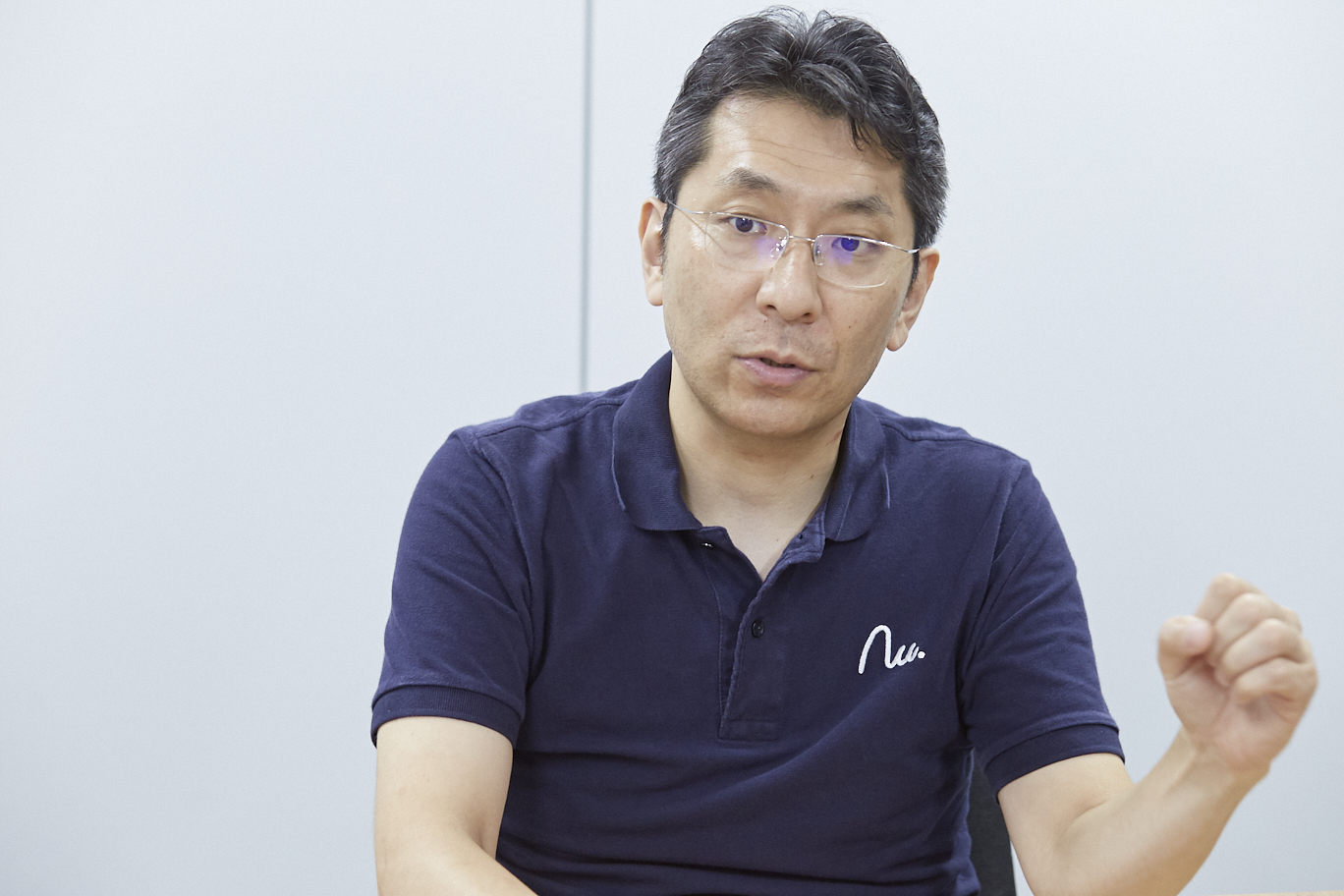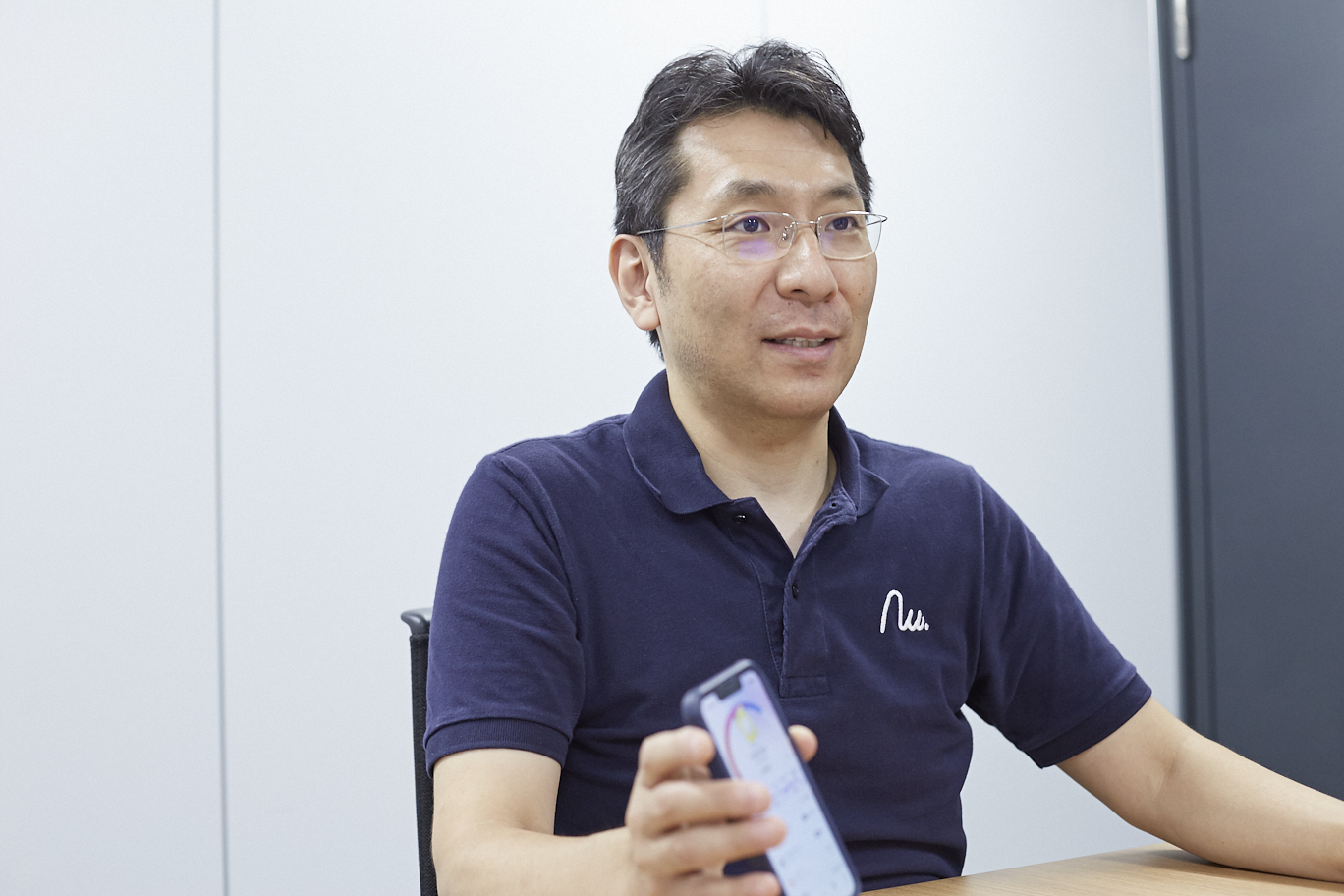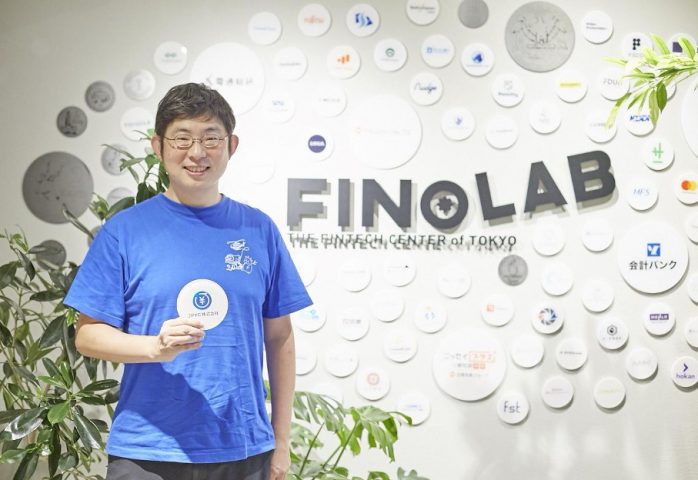INTERVIEWS
Innovations of “Nudge,” a credit card that encourages cashless payments among the younger generation: Creating the financial experience of the future courtesy of FINOLABInnovations of “Nudge,” a credit card that encourages cashless payments among the younger generation: Creating the financial experience of the future courtesy of FINOLAB

Credit cards were first issued in Japan in 1961. The 1964 Tokyo Olympics was said to have contributed greatly to their popularization. Sixty years later, how has this “cashless” payment method transformed and affected our lives?
Nudge Inc. (hereinafter, “Nudge”), a company geared toward creating a new financial experience, offers “Nudge,” a smartphone-native credit card. We asked Mr. Takashi Okita, the company’s Representative Director, how the company—whose name originates from the concept of “gently encouraging people to make better choices for themselves of their own accord” in the context of behavioral economics—intends to use its technology to develop the current state of cashless payments in Japan.
“Cashless Backward Nation”: The history of and transition to cashless payment in Japan
―Tell us about Nudge’s business.
Nudge (https://nudge.works/) is a fintech company aiming to become a “challenger bank” that creates the financial experience of the future in Japan. Our service includes “Nudge” (https://nudge.cards/), a next-generation credit card that links with smartphone apps.

―What is the background to the establishment of this business?
First, the strong sense of crisis that Japan was lagging in transitioning to a cashless society.
You may not have realized it, but Japan was once a “cashless developing nation.” Japan was at the forefront of the world when i-mode came about. Subsequently, e-commerce became possible with cellphones, and the use of “Osaifu-keitai” devices equipped with Felica became popular.
Thereafter, with the advent of iPhones, smartphones replaced the old devices called “Galapagos phones.” It took some time for Japan to catch up with this trend. For example, countries like China transitioned in a single leap to smartphones, unlike Japan, which transitioned sequentially from PC to flip phones to smartphones. Compared to Japanese users who experienced the change gradually, Chinese users who experienced the non-sequential change probably experienced the increase in convenience more strongly.
QR codes were developed in Japan in 1994, but China implemented cashless payment using QR codes through smartphone apps. Alipay and WeChat Pay exploded in popularity, right? Consequently, QR codes became the main means of payment in China and were later introduced to Japan as a kind of reimportation.
I’ve been involved with fintech since my university days in the ‘90s, and I find the current situation frustrating. In the past, executives from pay-based service businesses operating overseas requested that I teach them about “Japan’s mobile, including electronic payments.” Now, however, our situations have been reversed.
―When was Nudge established?
In February 2020.
―The use of cashless payment seems to have grown when the COVID-19 pandemic hit.
It’s true that the use of cashless payment grew during the COVID-19 pandemic. However, even before the COVID-19 pandemic, the cashless payment market was already expected to grow owing to the 2020 Tokyo Olympics and inbound tourism.
―Nevertheless, Japan is said to lag behind the rest of the world in terms of cashless payment.
The issue in Japan is the low usage rate of cashless payments, particularly among the younger generation. Although they are believed to be highly sensitive to information and be more likely to follow trends, the actuality reflects the exact opposite. This is the other background to our establishment of “Nudge.”
When you hear of cashless payments, QR codes and contactless payment may be what comes to mind, but 80% of cashless payments are actually credit card payments. Since the younger generation in Japan has a low usage rate of credit cards, the cashless payment rate is also low as a result. We believe there is room for improvement in this area.

Offering the experience of a “first card” that is safe, secure, and accessible to the younger generation
―You mentioned that the adoption rate of cashless payment is low among the younger generation in Japan, but what about overseas?
They generally use debit cards in the US and Europe. In those regions, having to undergo screening to be eligible for a credit card is a strong hindrance for the younger generation. In Japan, it is comparatively easier even for the younger generation to get a credit card, so the presumption is that credit cards are more widespread than debit cards.
I believe there is also a problem with the experience of using debit cards. Debit cards cannot be used for subscription services, and the payment timing when using them for e-commerce may differ from that of credit cards, which may detract from the user experience.
On the other hand, it is also true that the younger generation has a psychological barrier toward credit cards. They worry that they will “overspend,” or they may have a negative impression of it from their parents regarding debts or revolving payments, for example. Our “Nudge” sees this as a business opportunity.
―Tell us about the characteristics of “Nudge.”
“Nudge” is a next-generation credit card service developed on the premise that the credit card and smartphone are completely interlocked. It is a credit card that, from the application process, can only be accessed through a smartphone.

It is targeted toward the younger generation aged 18 and above. First, to put the users at ease, “Nudge” has a firm maximum spending limit set, and the timing of possible repayment is such that it can be handled from the day after the settlement. Since users can see how much money they have spent in real time through the app, it dispels their concerns about “overspending.” Of course, users may also increase their maximum spending limit based on their usage.
The app is designed such that the user can always check their usage status, so in the event of fraudulent usage of the card, the user will not be held responsible for it. While a typical credit card service may require users to call the support center and wait for a long time to request an investigation, with “Nudge,” users can feel secure in the fact that they can make the request immediately through the app.
―It’s like training on how to use a credit card.
That’s exactly what we think: we want the younger generation to use “Nudge” as their first credit card. Since it is basically a credit card that is designed specifically for use through a smartphone, it is easy to use, and of course, it is safe and secure, which are the most important aspects.
Creating a new financial experience for the future together with partner ecosystems
The ability to issue original partner credit cards is another feature of “Nudge.” The partner is expressed as a “club,” and users can avail of and use the credit card of their favorite club or the club of their “choice.” By using their credit card as usual, they can receive rewards from the club, and the club in turn obtains a revenue stream, so it can be used as a measure for fan communities and engagement.
Clubs have been created in various industries and business categories, and over 100 clubs have been created since the service was launched.

―That’s a lot of card designs.
These original partner credit cards can be printed and issued from a single card. We utilize the technology of one of our investors, TOPPAN Inc., for these cards.
―Aren’t there a few cases of startups developing credit card businesses?
I’m not sure if it’s accurate to categorize us a startup, but nevertheless, the only startups that have been able to issue credit cards are Mercari and Rakuten. Credit card license authorization must also comply with related laws and regulations and be registered. This is a significant obstacle that startups must overcome to enter this business. “Nudge” is listed as a “Registered Small-Amount Comprehensive Credit Purchase Intermediary.” It is the second registered business entity after Famima Digital One to be newly established under the amended Installment Sales Act of 2020, which was revised in June 2020 and enacted in April 2021.
Stability is also an essential characteristic of payment systems. Nudge uses the modern system of cloud-based serverless microservices. The app is also updated frequently using the Agile method, in 2-week development sprints.
Of course, our system alone cannot compensate for a solid core credit card system. In this area, we demonstrate our synergy with TIS Inc., a founding partner and investor in Nudge, which has over a 50% domestic market share in core credit card systems.
―Therefore, it is important to collaborate with partners and not rely on self-sufficiency.
In terms of financing, we have received investments from companies we compete with in certain areas. The financial system is massive, and when confronting new challenges, the difficulty involved in implementation becomes even greater. Hence, we understand it proves they share our sentiment that a “challenger bank” like us is necessary to create a new financial experience of the future.
FINOLAB, who supports Nudge’s business growth through close communication
―I wanted to ask about your relationship with FINOLAB. How long have you known about them?
We have known of them since before Nudge was established.
―What are the benefits of moving into FINOLAB?
First, their location. FINOLAB is based in Otemachi, the financial center of Japan, and this is a very important factor in earning the trust of our business partners. Our fellow tenants are also fintech companies that have undergone the screening process, so we also have the benefit of possibly networking with them.
When we moved in, they responded quickly to our requests from the initial consultation stage, so we are very grateful for that. We have particularly strict security rules owing to the nature of our business, and this requires us to maintain office access records and an established dedicated network. We are in close communication with FINOLAB, and they have responded to these requests. This kind of relationship is extremely essential.
―Lastly, tell us about Nudge’s vision going forward.
Our mission is to “create the financial experience of the future through the actions of each individual.”
Marketing programs and campaigns initiated by the younger generation and student interns are a part of this. These include efforts such as “fan meetings” and “student clubs.” We are gradually allowing them to take on more challenges.
Looking back at the financial services being offered by companies to date, most are information and services provided one-sidedly by companies to consumers. Of course, in some cases, this cannot be helped because of the nature of finance, but we want to design it such that it is interactive.
At Nudge, our desire to provide appropriate and reliable services is a given, but we would also like to create the financial experience of the future, starting from messages and communication from users, such as “I didn’t know we could experience something so interesting!”

企業情報
Nudge Inc.
- CEO
- Takashi Okita
HEAR MORE
-

JPYC Inc.
How Stable Coins Are Transforming Society: Innovation Envisioned by JPYC at FINOLAB
-

Ecrowd Inc.
“Ecrowd,” an equity crowdfunding that connects startups with individual investors. Taking full advantage of FINOLAB to design a “sustainable triple-win” world
-

luca.inc
Transforming conventional investment practices in Japan through the democratization of alternative investments: A closer look at LUCA’s vision for an “alternative investment platform from Japan”